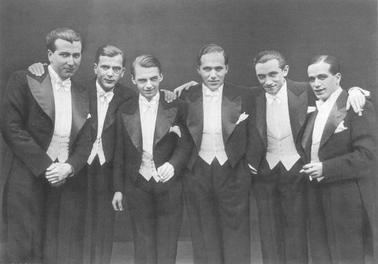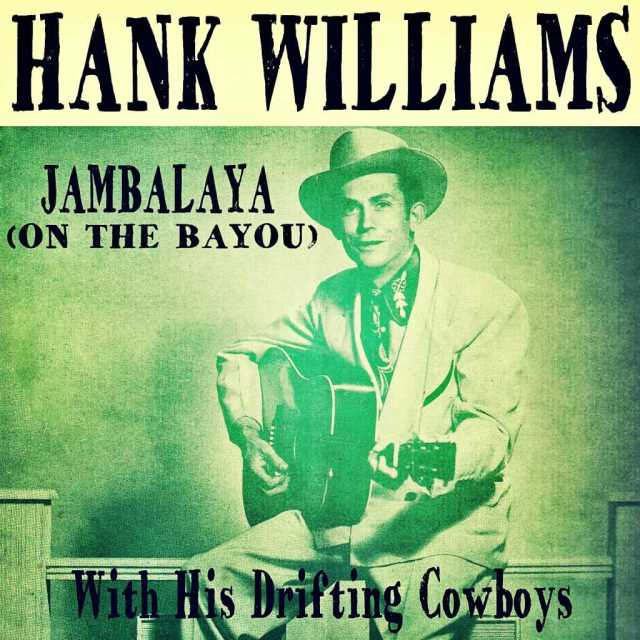Right now in my German class, we're learning about a group called the Comedian Harmonists. They were active in Germany during the late 1920s and early 1930s, and their name suggests exactly what they were. They harmonized great together, and they sure did entertain audiences in the Weimar Republic. But their story got murkier from there, as the Nazi regime took over in Germany. That's because 3 out of the 6 members were Jewish, and another had a Jewish wife. There was internal strife among the group about whether to leave Germany, but they fortunately made the decision to do so. Their decision was prompted by a ban of their performances in Germany, as the Nazi regime ramped up its brutal antisemitism. It technically only banned the Jewish members from performing, but if you're missing half the group, it's essentially a total ban. But today, I want to focus more on the musical stylings of the Harmonists. And specifically, I want to focus on how they may have foresaw doo wop two decades before it happened. And they did so in Germany of all places!
The group was started by Harry Frommermann, an unemployed actor who had known what economic strife was like. The Weimar Republic had just gone through its era of hyperinflation, and Harry was living in a dingy apartment where his only companion was his parrot, Paganini. In Germany, his parrot would be better referred to as a "Papagei"! Frommermann went through a selective audition process for his group, where he tested people on his complex arrangements. He was heavily influenced by The Revelers, an American group that was famous for their close harmonies. Frommerman's group would later go on to incorporate that barbershop style harmony in their sound. They were famous for their ability to have individual members be prominent and then blend back to be less prominent within the overall sound.
But how was their sound similar to doo wop? Well, Frommermann's voice was a prominent lead falsetto, as was the case with many doo wop groups (i.e. the Paragons). Also like with the doo wop style, the bassman has a prominent role. In the Harmonists, that role belonged to Robert Biberti. He got plenty of solos in the Harmonists songs, and his rich voice is definitely heard often. The group also likes to use nonsense syllables, much like the doo wop groups of the 1950s and 60s. They do so in a more barbershop-esque style, but it's definitely still comparable to doo wop. For example, the use of nonsense syllables is clear on their most famous record, "Veronika, der Lenz ist Da". In English, the name means "Vernoika, spring is here". On that song they scat on "da-da-da-da" for a while, and bassman Biberti has a nice little solo at the end. The way they use Biberti reminds me of how the early doo wop group the Ravens would use their bass, Jimmy Ricks. One last doo wop-like aspect of the Harmonists is sparse instrumentation. Typically, the only instrument playing on their songs is that of pianist Erwin Bootz. And it complements their harmonies quite well, just like Raoul Cita's piano did for the Harptones.
While the Harmonists typically entertained audiences with their upbeat and cheerful songs like "Veronika", their repertoire was certainly not limited to this. For example, during their last concert in Germany, they performed "Aufwiedersehen, leb wohl", or "Goodbye, my dear". It was a very emotional performance, especially with all the rising tensions with the Nazis. It was dramatized in the Comedian Harmonists movie I am currently watching, and the actors in that movie lip-synced to the original recording. Additionally, the movie showed the reaction of one audience member in particular, Erna. She had been the love interest of Harry, before Robert went full Eric Clapton and swooped her up. In any case, Erna was moved to tears by their last performance in Germany, and that's something that I don't think is purely movie drama. I truly appreciated how the movie used the Harmonists' original recordings, which are timeless. By the time the Harmonists' recorded in the early 1930s, music technology had moved a bit beyond the crudeness of "singing into a can" that was prominent in the early 20th century. So while the recording technology is still a bit primitive to today's ears, one is still able to appreciate the richness of the Harmonists harmonizing.













